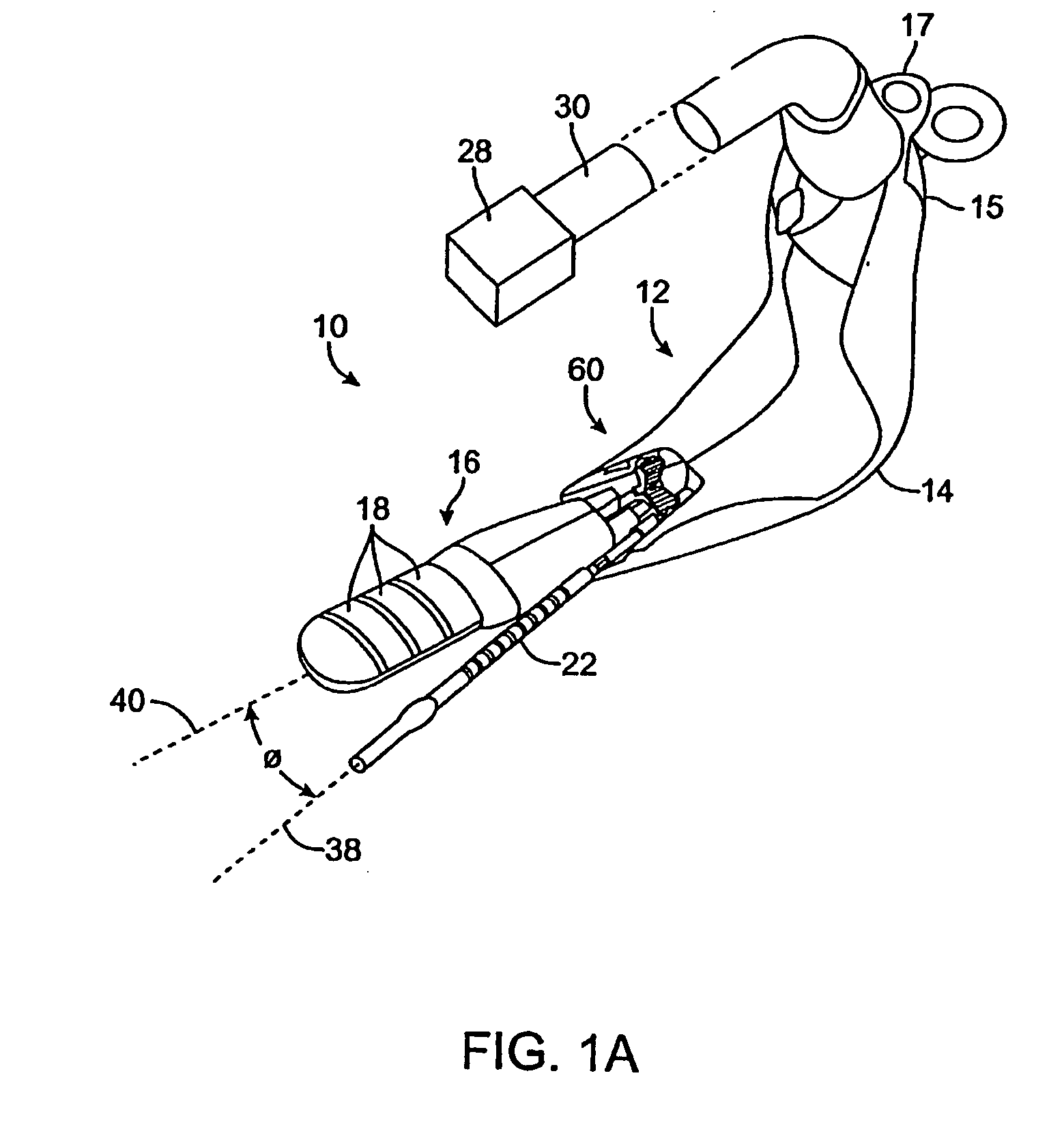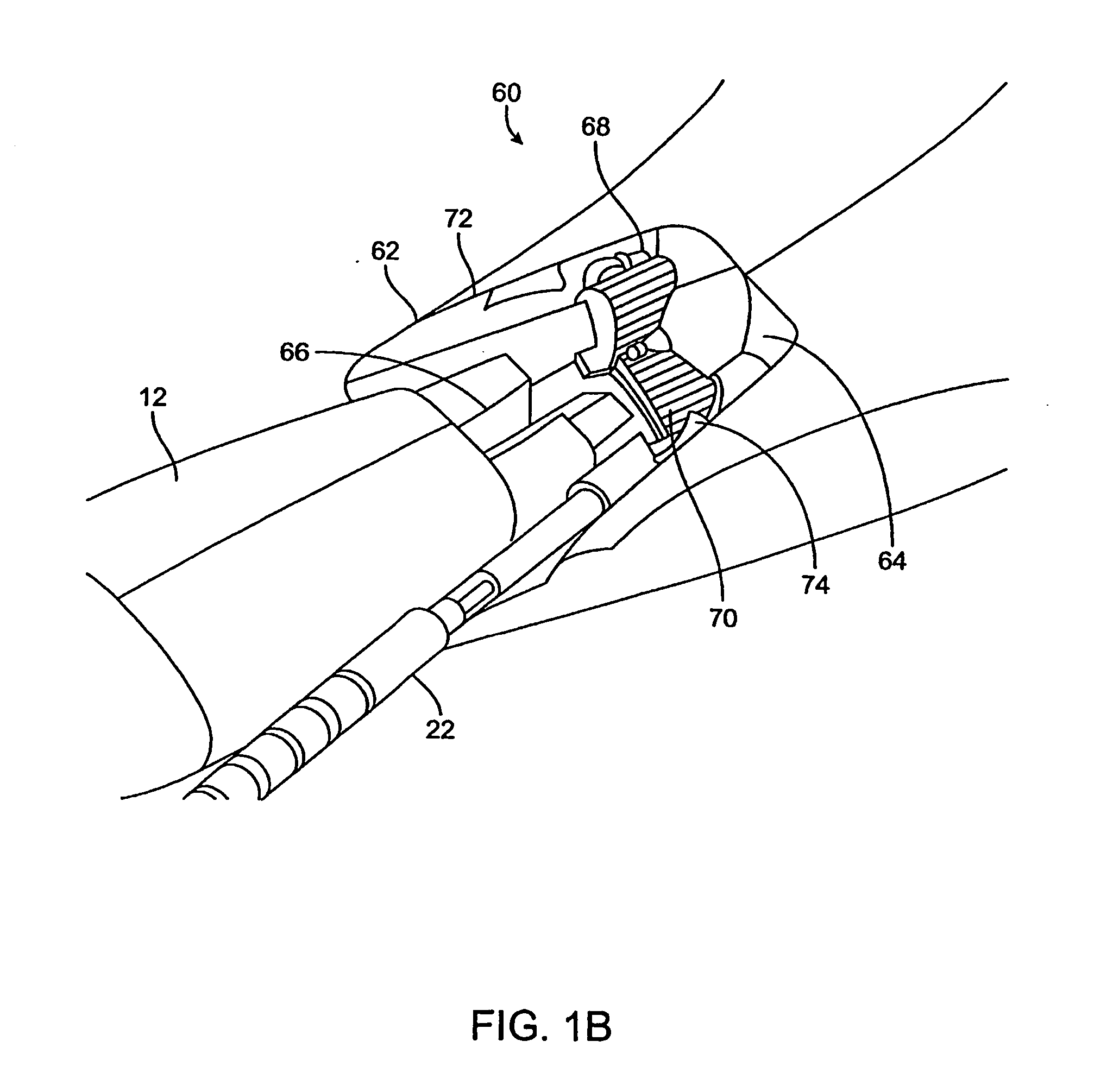Incontinence treatment with urethral guide
a technology of urethral guide and incontinence, which is applied in the field of medical devices methods, systems, kits, etc., can solve the problems of urinary leakage typically occurring intra-operatively, mechanical damage to the sphincter, and alignment of electrodes with target tissue, etc., to achieve sufficient tolerance and facilitate registration of treatment delivery surfaces
- Summary
- Abstract
- Description
- Claims
- Application Information
AI Technical Summary
Benefits of technology
Problems solved by technology
Method used
Image
Examples
Embodiment Construction
[0070] The present invention provides methods, devices, systems, and kits for accurately positioning a treatment surface, such as an electrode array, adjacent fascia and other collagenated tissues to selectively treat the target tissue. In a particular embodiment, the present invention accurately directs an electrical current flux through the target tissue between bipolar electrodes that are contacting the target tissue to shrink or stiffen the collagenated tissue.
[0071] Exemplary embodiments of the present invention heat target tissue in the vagina for treating urinary incontinence. The urethra is composed of muscle structures that allow it to function as a sphincter controlling the release of urine from the bladder. These muscles are controlled by nerve bundles that in part run in close proximity to the urethra-bladder junction and along the axis of the urethra. Pelvic surgery in this region has been associated with the development of intrinsic sphincter deficiency of the urethra...
PUM
 Login to View More
Login to View More Abstract
Description
Claims
Application Information
 Login to View More
Login to View More - R&D
- Intellectual Property
- Life Sciences
- Materials
- Tech Scout
- Unparalleled Data Quality
- Higher Quality Content
- 60% Fewer Hallucinations
Browse by: Latest US Patents, China's latest patents, Technical Efficacy Thesaurus, Application Domain, Technology Topic, Popular Technical Reports.
© 2025 PatSnap. All rights reserved.Legal|Privacy policy|Modern Slavery Act Transparency Statement|Sitemap|About US| Contact US: help@patsnap.com



